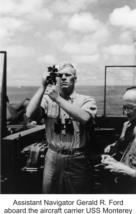
NavList:
A Community Devoted to the Preservation and Practice of Celestial Navigation and Other Methods of Traditional Wayfinding
Re: Lose the war if it's cloudy
From: Gary LaPook
Date: 2016 Sep 10, 11:09 +0000
From: Bob Goethe <NoReply_Goethe@fer3.com>
To: garylapook@pacbell.net
Sent: Thursday, September 8, 2016 11:13 AM
Subject: [NavList] Re: Lose the war if it's cloudy
From: Gary LaPook
Date: 2016 Sep 10, 11:09 +0000
You're leaving out CONSOL used till 1991; DECCA in use til 2001; OMEGA used til 1997; SATNAV (transit) the first satellite navigation system from 1964 to 1996 (a fix only every 90 minutes.) LORAN-C is still in use in other parts of the world, not the US (penny wise and pound foolish.)
In the 1980 when LORAN-C was coming on line there was the "mid-continent gap" in the US where there was no LORAN-C coverage since it was originally intended for ocean navigation. But aviators demanded LORAN-C so they eventually put in a couple of chains to fill in the gap, I remember that in 1982 i duct taped a large (size of a bread box) Micrologic marine LORAN-C on top of the instrument panel of my Cessna 150, stuffed the antenna coupler under the right seat, and ran a wire from it out the right door and back to the tail where I just tied it to an existing VOR antenna. I was the first kid on the block to have LORAN in my plane.
gl
From: Bob Goethe <NoReply_Goethe@fer3.com>
To: garylapook@pacbell.net
Sent: Thursday, September 8, 2016 11:13 AM
Subject: [NavList] Re: Lose the war if it's cloudy
From Lu: >>Later in the article it speaks of "accuracies of 1~2 miles" in at least some experiments with the system.<<
I suppose part of our challenge is knowing the extent to which these "1~2 miles" results were available operationally. There seems to have been a distinction between the results they could get with groundwaves (within just a few hundred miles of shore) and the difficulties with multiple signal arrival times further offshore at night, when signals were received after bouncing once or twice off the ionosphere.
From Gary: >>But first they had to capture islands on which to set up the LORAN stations, For example, one was not set up on Gardner island until December, 1944. Here is a link to a map showing the LORAN coveerage in 1945, lots of open spaces.<<
This leaves me musing about the history of celestial navigation in the US Navy, as gleaned from a variety of posts in NavList. This is where my speculations lie at present.
1941 to 1957-ish: LORAN existed, but with limited coverage and accuracy. The best bet for offshore navigation during this period would have been celestial navigation/dead reckoning.
When (later to become President) Gerald Ford was assisting in the navigation of his ship to support the invasion of Kwajalein Atoll, LORAN may have been completely unavailable, or available but inadequate to navigate the vessel within visual range, it being 2.5 miles long and 800 yards wide, with a height above sea level of something around 5 feet.
1957 to 1975: LORAN and the nacent satellite navigation system become more useful. Celestial is still treated as an important backup navigation system...and is still regularly practiced, if not by navigation officers any more, then at least by enlisted quartermasters.
1975 to 1992: Electronic systems take over most navigational tasks. Celestial navigation practice remains to some extent, but only because it is a part of the Navy's institutional memory. Bowditch, at least in 1977, includes extensive chapters on celestial history and practice.
The photographs, not uncommon from the WW2 era, of naval officers with sextants in their hands are not available to be taken any more.
1992 to the Present: GPS shows such enormous utility that it becomes one-stop-shopping for all navigational needs, both coastal and offshore. Already by 1995, GPS is so trusted, and the use of other navigational strategies to verify the GPS results so rare, that the cruise ship "Royal Majesty" could run aground because nobody noticed when their GPS antenna got disconnected.**
LORAN is deactivated in the US in 2010. The general thinking is "the best backup for a GPS unit is another GPS unit." Celestial navigation requirements still exist for quartermasters, but actual ongoing competence in CNav is no longer a requirement of the position. Bowditch abbreviates its treatment of celestial.
**https://ti.arc.nasa.gov/m/profile/adegani/Grounding%20of%20the%20Royal%20Majesty.pdf
This is a speculative reconstruction, of course. I am eager to be corrected by those of you more knowledgeable.
Bob







